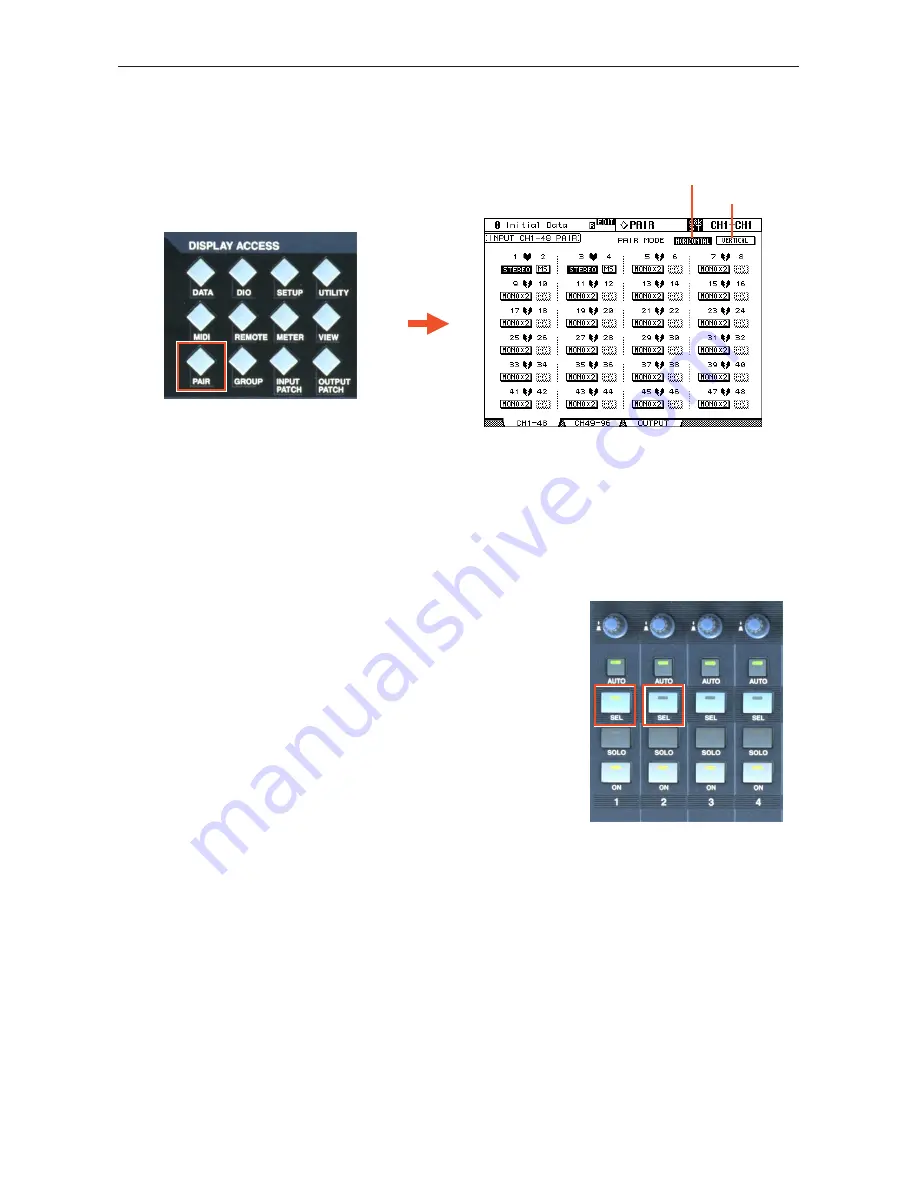
DM2000V2 Quick Start Guide
17/28
CHANNEL PAIR
If some Stereo input sources are used, such as a Synthesizer or CD player, it could be useful to pair the relevant channels
together. There are two modes for pairing channels, as selected in the [PAIR] menu.
Horizontal mode
allows odd numbered channels to be paired with their adjacent even numbered channel.
Vertical mode
allows channels on the top fader layer (1-24) to be paired with the equivalent channel on the layer below
(25-48). In the same way, channels 49-72 can be paired vertically with channels 73-96 respectively, but the Master chan-
nels can only be paired Horizontally.
When channels are paired, they share the same fader level, the same ON, EQ, Gate, Comp, Aux settings. Pan and Routing
parameters remain separate.
To quickly pair channels without using the LCD screen, first
1
hold down the
[SEL] button for the Left channel, then
2
also hold down the [SEL] button for
the Right channel (or vice versa) for half a second. This only works in Hori-
zontal Pair Mode.
HORIZONTAL
VERTICAL
1
2


























